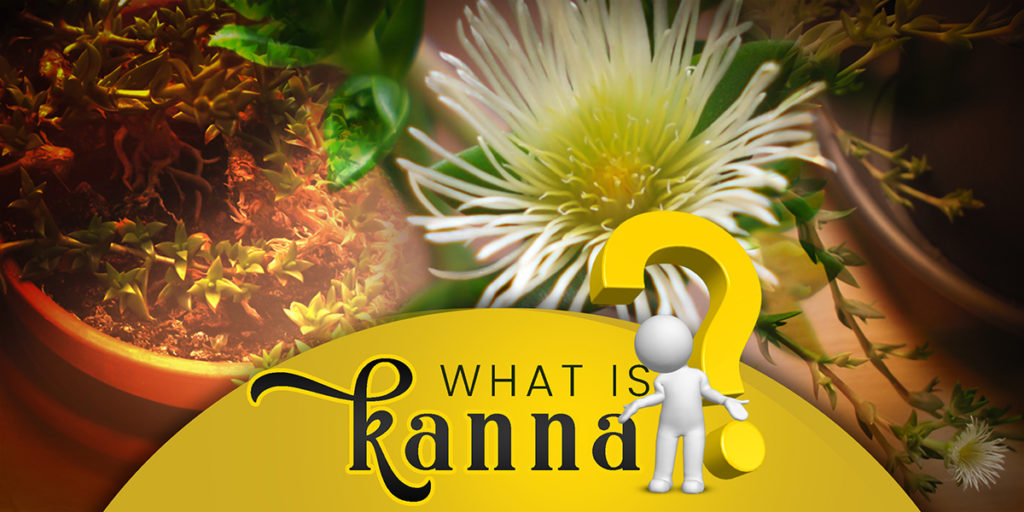Kanna
Native to Southern Africa, Kanna is a beautiful
succulent plant aka Sceletium tortuosum,.Still largely unknown in North
America, this mood-lifting herb is a wonderful addition to your botanical
regimine. In case you want to turn a bad day around, this beneficial tea is as
reassuring to your state of mind as it is tasty.
Climatic conditions required for growing kanna are perfectly available in
Southern Africa’s inland desert .
Its leaves are flat and succulent, it’s roots fibrous, it’s branches willowy,
and it’s wispy flowers range from yellow and pink to white. Its a member of ice
plant family, kanna loves to spread and blanket the ground. This low-growing,
herbaceous subshrub absorbs plenty of moisture from the season rains to produce
flowers and thrive throughout the year.
Uses of kanna:
Sceletium tortuosum is traditionally used to fight stress and depression,
relieve pain and alleviate hunger. The dried plant material is often chewed as
a quid, and the juices swallowed, but it has been made into teas and tincture.
Ways of using Kanna

Snuffed, smoked or tea

Traditionally the kanna plant, Sceletium tortuosum, is fermented and dried before being chewed or smoked. Kanna can be purchased as a powder, tincture, as a part of herbal mixes and as a tea.
Insufflation
Its powdered version can be used as a snuff. 20
mg is enough to produce a substantial effect. The effect of kanna come up
quickly as a snuff.
The problem with insufflation is that it damages the nostrils and nasal mucosa,
especially in case of repeated use.
Sublingual use of Kanna
It means placing it under the toungue and holding it there for a prolonged period of time, until the alkaloids are absorbed by the body. The effect last for about two hours and will fade quickly in the hours afterwards.
Chewing Kanna
The local inhabitants of ‘Kannaland’ are known to chew on fermented and Powdered Sceletium plants for prolonged period of time.
Kanna tea

As a tea kanna is less effective and more of the product is needed to reach the same effect. Very strong dosages may lead to nausea and vomiting, visual distortion and dizziness.
Effects Of Kanna
Kanna has been traditionally used as a mood enhancer and to help decrease stress, anxiety and tension.
It has effects that reportedly include the elevation of mood and it has also been used as an appetite suppressant by Shepherds walking long distances in arid areas.
Kanna can have varying effects depending on the different methods of ingestion . For example, insufflation has reportedly caused euphorbia, stimulation and increase in general well being with doses of 50-200mg. If it’s chewed, it seems to act as sedative also increases general well being while using about 100-200mg and can last about 1 hour.
It has been used by South African pastoralists and hunter-gatherers as a mood-alering substance since prehistoric times.
If it’s taken in moderate doses, Kanna doesn’t impair a person’s judgement or mental focus.
It can enhance brain capability or functions.
It is also used by herbalists to make drug but unlike recreational drugs, kanna is not believed to result in addition, impaired judgement, or sedation.
Kanna has a quality unlike other drugs that even in large amounts, Kanna is not hallucinogenic or otherwise intoxicating.
Kanna is used nowadays to :
Suppress appetite Sedate Stimulate Decrease anxiety Relieve stress and tension also to Increase Self-confidence kanna is being used widely.
In some cases, some South African users noted sexual arousal or increased sensory sensitivity. Some users felt that it is causing Euphoria and meditative tranquility.
If Kanna is taken in high doses then it may cause mild visions, but it’s not known for its hallucinogenic properties.
It’s effect may vary when its taken with other products like tobacco, alcohol and cannabis sativa.
Due to its success, the western market is now experimenting to discover its potential as an anti-depressant.
Kanna is really starting to turn heads with regards to its possible medical applications and while its full potential is yet not fully understood.
Many of Kanna’s compounds are also believed to act as Phosphodiesterase-4 (PDE-4) inhibitors. These compounds can enhance mental clarity, decrease anxiety and also treat episodes of psychosis.Kanna is not hallucinogenic, colours may appear softer or more accented and the user may perceive objects to be surrounded by a subtle glow.
Some users may experience a slight change in visual perception.
Side Effects Of Kanna

Kanna may cause a soft or loose stool.
If you want strong effect and your body don’t feel that strong impact the first time it means your body might needs to get used to it.Drowsiness can be experienced by some users and can be another side-effect of Kanna.
Hence, one should not take kanna while working or while driving. Some users experience insomnia, so for that one should not take kanna late in the day.
No such adverse effects have been reported even by long-term users of Kanna . Test have been conducted on cats and dogs by Hirabayashietal.A slight increase in daytime sleep for the cats has been observed as side effect.
Cultivation of kanna:
Kanna or Sceletium tortuosum is a plant native to South Africa, and due to its many properties and effects.
Kanna is a succulent plant from the Aizoaceae family. Being succulent plant, kanna is very easy to grow and requires little care. It’s flowers are small and colours vary from white to yellow.Due to a steep rise in its popularity it is rarely found in its natural habitat.
Cultivation Of Kanna

Propagation through seeds: Kanna’s propagation mainly occurs through seeds. Just place the seeds in the soil ,scatter them properly and press them down lightly and you have to keep the soil moist untill growth is observed.
For Kanna’s cultivation, it should be kept away from frost may be indoors in winter, as they don’t tolerate frosting well.
Its a succulent plants so it prefer light but not direct sunlight, specially when its harsh weather.
Optimal temperature would be minimum of 60°F or 16°C.
If its planted in garden then mix the soil with some grit to allow proper drainage.Due to its absorbing property Kanna’s leaves and roots are able to retain a lot of water, so don’t overwater your kanna plant.
It can be watered once in every two weeks in cold weather and increase it to once a week in hot weather conditions.
History of Kanna

The first report was written by a Dutch explorer in 1662, in which the main effects and usefulness of kanna plant was highlighted. A couple of years later, in 1685 colonial governor of the Dutch Cape colony, Simon van der Step, describes the local use of kanna in his journal: ‘They chew mostly a certain plant which they call Canna and which they bruise, roots as well as the stem, between the stones and store and preserve in sewn-up sheepskins. When we came to the Coperbergh in October, it was being gathered from the surrounding hills by everybody.’
Thunberg was the first to report smoking as a way to consume kanna.
Some myths persist that it itself has hallucinogenic properties, but these can probably be derived from its combination with other herbs – among others cannabis sativa. Dutch began referring to it as ‘kougoed’-or “good to chew” because it was mainly chewed during consumption.This plant is indigenous to South Africa, and has been used for millennia.This succulent plant has a long history of traditional use.
It helped tribes in so many ways as in relieve feelings of thirst and hunger, combat fatigue, and so much more.
It is also reported to use in a range of spiritual and social purposes.
Record states that before South Africa was colonized, this area was mainly inhabited by the Khoikhoi and the San tribes.
Kanna has played a key role in their way of life.
Although the properties of Kanna have been utilized for centuries, still it’s largely unknown in North America.
According to Peterson, at the end of 18th century, ‘Channaland’ was the name of place where the plant was found.
Gericks and Viljoen write that plants of the genus Sceletium have been used for millennia to combat fatigue, to relieve thirst and hunger, as medicine and also as spiritual purposes.

